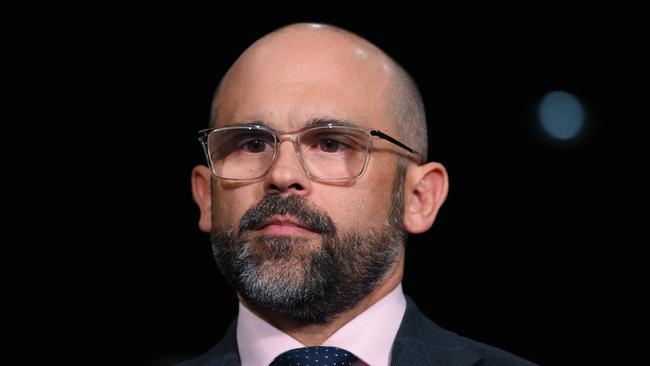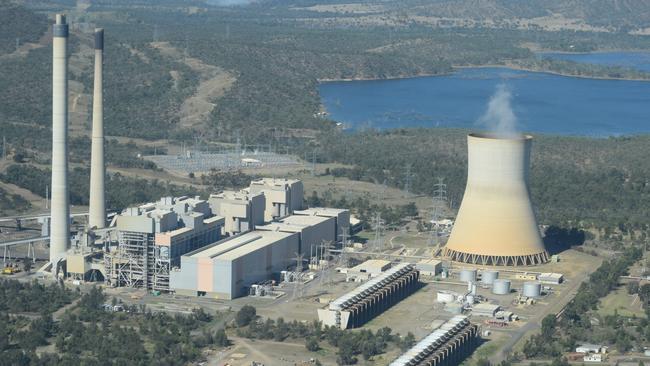State government to axe Labor’s 80 per cent renewables target
The state government will axe Labor’s renewables targets and extend the life of an ageing coal-fired power station which critics argue could cost taxpayers almost half-a-billion dollars each year.

QLD News
Don't miss out on the headlines from QLD News. Followed categories will be added to My News.
The state government will axe Labor’s renewables targets and extend the life of an ageing coal-fired power station which critics argue could cost taxpayers almost half-a-billion dollars each year.
Treasurer and Energy Minister David Janetzki said the state would meet its net zero emissions target by 2050, but refused to say whether the government would achieve the legislated 75 per cent reduction by 2035.
Separately, Queensland’s renewable energy targets - 70 per cent by 2032 and 80 by 2035 - are set to be repealed.
Mr Janetzki said Treasury would work with government-owned corporations to determine the technical and commercial life spans of coal generators.
“They will remain open for as long as it is economically sensible and systemically needed not an arbitrary date to fill a headline in a magazine,” he said.
“As important as coal generated capacity is to our state, and to the stability of the national electricity market, we will also need to prepare for the gradual closure of those power stations in the future.”
The Treasurer will rely on new gas generation to maintain grid stability during the transition from coal to renewable energy and he has called on the private sector to help do the “heavy lifting”.

“Gas must again assume its intended role as backstop as our energy system inevitably moves towards renewables and other clean energy sources in the decades ahead,” he said.
“It burns at half the emissions of coal and we are blessed with abundance.”
The government approved $134m for CS Energy to develop the 400-megawatt Brigalow Gas Peaker Project at Kogan Creek.
The government also announced it will spend $50m to transition a former gold mine west of Bundaberg into a pumped hydro project.
Mr Janetzki said Mt Rawdon could be among the first mines in the country to be converted into energy generation.
Government company CleanCo will use the money to develop Evolution Mining’s Mt Rawdon in preparation for a final investment decision, but further funding will be required if it commits to the scheme.
“In a model that could be replicated elsewhere, this could be an opportunity to repurpose the existing goldmine workforce and provide employment opportunities for generations to come,” Mr Janetzki said.
CleanCo will provide $30m towards Mt Rawdon Pumped Hydro scheme for a feasibility study to be completed in September, and has the option to buy the project for $50m from Evolution and ICA Partners before then.
If CleanCo decides to invest in the project further before June 2028 it would be required to pay another $100m, but would require further costs for the mine site land.
Evolution Mining executive chair Jake Klein said the project was among the most advanced and cheaper hydro projects that could be developed.
“We welcome the Crisafulli Government’s interest and involvement in this landmark project, which is set to facilitate low-cost green power and provide jobs to the community and Queensland for decades to come,” Mr Klein said.
Mr Janetzki’s announcements were met with criticism from the Queensland Conservation Council, which said keeping the Callide B coal power station open could cost Queensland taxpayers up to $420m a year.
Queensland Conservation Council Director Dave Copeman said the government was elected on a promise to reduce emissions by 75 per cent by 2035.
“Now they are playing dangerous politics with our energy system as well as breaking their promise on real climate action,” he said.
“Callide B was designed with a life span of 40 years and it’s set to retire in 2028.
“Keeping it open beyond then could cost Queenslanders up to $420 million per year and expose us to higher risks of outages and pollution.”
Mr Copeman said the announcement came as the state recovers from a horror wet season that saw significant flooding in Western and North Queensland and a $2bn damage bill from Cyclone Alfred.
Originally published as State government to axe Labor’s 80 per cent renewables target


